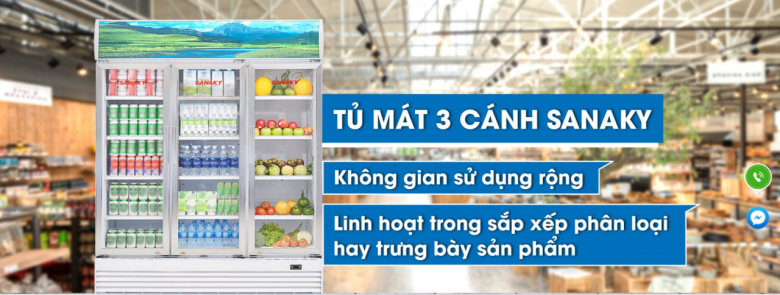In today's fast-paced world, keeping food and beverages fresh is not just a convenience — it’s a necessity. Whether in a bustling retail shop or a modern household, the role of refrigerated display cabinets is more vital than ever. These units are designed not only to preserve perishable items but also to present them in an appealing and accessible way. In this article, we’ll explore the most common types of refrigerated display cabinets used in both commercial and residential settings, highlighting their features, benefits, and practical applications.

1. What Is a Refrigerated Display Cabinet?
A refrigerated display cabinet, or showcase fridge, is a specialized appliance that combines cooling functionality with a transparent or open design for product visibility. These units are often used in retail environments such as supermarkets, convenience stores, cafes, and bakeries. In recent years, smaller versions have become increasingly popular in households for storing drinks, snacks, or prepared meals.
2. Common Types for Retail Shops
a. Upright Display Refrigerators (Vertical Chillers)
Upright display refrigerators are among the most popular choices for retail use. They come with one or more glass doors, adjustable shelves, and interior lighting. These cabinets are ideal for storing bottled drinks, dairy products, ready-to-eat meals, or desserts.
Key features:
- Vertical design saves floor space
- LED lighting for better product visibility
- Double-glazed glass to reduce condensation
- Automatic defrost and temperature control systems
Best for: Supermarkets, convenience stores, beverage outlets.
b. Open Display Chillers (Multideck Coolers)
Open display chillers are commonly found in self-service areas. They have no doors, allowing customers to grab items easily. Multideck units are ideal for chilled food products like salads, sandwiches, dairy, and packaged meals.
Key features:
- Easy access for customers
- Powerful airflow refrigeration
- Adjustable shelving for flexible display
- Night blinds for energy efficiency when closed
Best for: Supermarkets, deli sections, bakeries, and cafes.
c. Countertop Refrigerated Displays
These compact units are perfect for highlighting smaller items like pastries, cakes, or chilled beverages at checkout areas or on service counters.
Key features:
- Compact size suitable for limited space
- Glass encasement for visibility and hygiene
- LED lighting for enhanced presentation
- Often come with sliding doors at the back for staff access
Best for: Bakeries, coffee shops, dessert stores.
d. Serve Over Counters
Serve over counters combine refrigeration with service. These horizontal units are used to store and serve fresh products such as meat, seafood, or deli items.
Key features:
- Curved glass front for better viewing
- Integrated work area for staff
- Wide temperature range options
- Available in modular designs
Best for: Butcher shops, seafood markets, delicatessens.
3. Common Types for Home Use
Homeowners are increasingly investing in refrigerated cabinets not only for their practical value but also for their sleek, modern designs. Let’s explore some popular options.
a. Mini Beverage Coolers
These are compact fridges designed specifically for beverages. They can store sodas, juices, water bottles, and even wine.
Key features:
- Freestanding or under-counter installation
- Transparent glass doors for quick selection
- Digital temperature controls
- Quiet operation
Best for: Home bars, kitchens, entertainment rooms.
b. Wine Coolers
Wine requires a specific temperature range for optimal storage. Wine coolers are designed to preserve flavor and quality over time.
Key features:
-Multiple temperature zones for different wine types
- Vibration-free compressors
- UV-resistant glass doors
- Stylish wooden or metal shelving
Best for: Wine enthusiasts, collectors, or households that frequently entertain guests.
c. Compact Display Fridges
These are scaled-down versions of retail units, designed for home use. Ideal for storing snacks, drinks, or leftovers, they bring a professional feel to the kitchen or pantry.
Key features:
- Glass-front design for visibility
- Adjustable shelving
- Energy-efficient compressors
- LED illumination
Best for: Modern kitchens, shared family spaces, Airbnb rentals.
4. Key Benefits of Refrigerated Display Cabinets
Regardless of their application, refrigerated display cabinets offer numerous advantages:
- Energy Efficiency: Most modern units use inverter technology and eco-friendly refrigerants to reduce electricity consumption.
- Product Visibility: Transparent doors and strategic lighting make products more appealing and easier to find.
- Temperature Precision: Advanced controls maintain consistent temperatures, preserving product quality.
- Hygienic Design: Materials like stainless steel and tempered glass make these cabinets easy to clean and maintain.
5. Choosing the Right Display Cabinet
When selecting a refrigerated display cabinet for either commercial or residential use, consider the following factors:
- Size and Capacity: Choose a size that fits your space and inventory needs.
- Temperature Range: Ensure it matches the type of product being stored.
- Energy Consumption: Look for energy-efficient models with good insulation.
- Aesthetic Appeal: Especially for home use, the cabinet should match your décor.
- Brand Reputation and Warranty: Opt for trusted manufacturers and solid after-sales service.
Refrigerated display cabinets are essential appliances for both shops and homes. From upright chillers in retail stores to mini beverage coolers in households, these units provide a reliable and stylish solution for preserving and showcasing chilled goods. As technology continues to evolve, new models are becoming more energy-efficient, user-friendly, and visually appealing, making them a smart investment for any setting.
 Vietnamese
Vietnamese  English
English  Chinese
Chinese  French
French  Spanish
Spanish  Russian
Russian  Arabic
Arabic  Portuguese
Portuguese